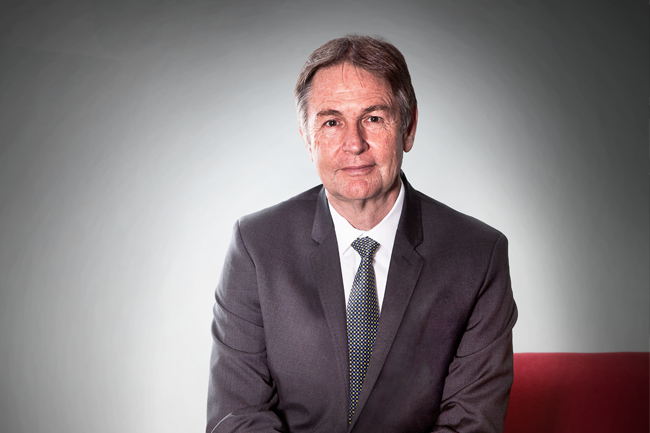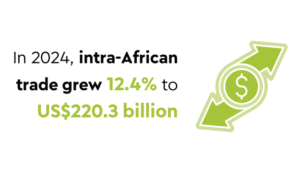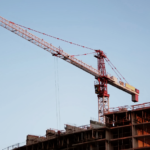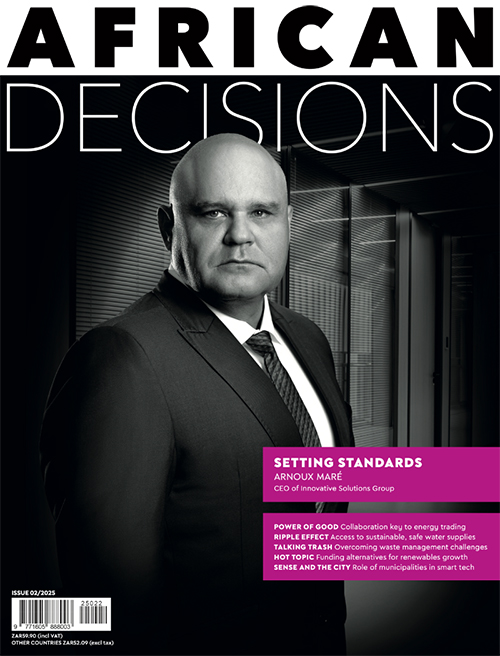The automotive industry is one of the most volatile because it changes so quickly. This is largely due to it being dependent on factors beyond its control, such as what the dollar is worth on any given day, let alone the price of oil. Nissan South Africa, however, under which the sub-Saharan African (SSA) arm falls, is succeeding remarkably well, thanks largely to a comprehensive understanding of how a developing market evolves.
Jim Dando, director of sales and operations at Nissan South Africa, says that despite sudden and dramatic economic upheavals – something African nations are prone to – history has shown that when developing markets emerge, they develop rapidly. For this reason, it is important to recognise the potential right now.
Currently that potential looks somewhat dim for the African motor industry, as Dando outlines: ‘In the SSA region, we have been experiencing a growth rate of 7% on average, until the past year. When the oil price plunged in December 2014, the market shrank. This was further compounded last June when commodity prices dropped significantly, worsened by the dollar strength later in the year.
‘As a result, foreign exchange became quite scarce in countries such as the DRC, Tanzania and Zambia, with the latter dramatically losing 57% in six months.
‘This has created some havoc, as it is difficult to manage pricing under these conditions, let alone the impact on countries trying to raise foreign capital to purchase vehicles. This scenario is expected to continue through 2016, and at Nissan we are consolidating to work harder in order to maintain the volumes we expect from the market.’
Nissan’s acute focus on the continent derives from the manufacturer considering it as the last frontier of development. By maintaining a strong presence, argues Dando, it will be able to capitalise on growth. ‘Motor manufacturers need to have their eyes wide open. This market changes so quickly with reformation, particularly enhancements to legislation and development of infrastructure.
‘Six years ago, 75% of Angola’s model range comprised pickups. Road infrastructure developed so quickly that the government, concerned about accident rates, restricted car imports to no older than four years. The result was the passenger segment growing exceedingly rapidly, and the SUV market growing to 30%.
‘Right now there appears to be quite a demand for manufacturing. We’ve been approached by some markets to set up operations but you have to look at so many factors, take each project one at a time. It’s not necessarily wise to flood a market that is still experiencing shrinkage.’
History has shown that when developing markets emerge, they develop rapidly. For this reason, it is important to recognise the potential right now
Of the 52 African countries available to Nissan in which to transact, it has a presence in 42, excluding Botswana, Namibia and South Africa. Dando explains that as each country is characteristically unique, the company’s footprint is expanded through local partnerships, which are in turn man-dated to expand the distributor network. Nigeria makes for a case in point.
‘Our three-year-old partnership has already manifested in the establishment of four world-class Nissan facilities across the country, with a fifth currently being built,’ he says. ‘These are owned by the distributor and enhance the 11 existing dealerships.
‘Our primary concern is to ensure we have a partner in every African country, as well as to be represented in all major centres of the nations in which we trade – and to do so as quickly as possible.’
There is good reason for this. Unlike South Africa, where vehicle purchase decisions are emotional – sleek, new, prestigious – Africans tend to consider the spread of services and the extended needs and conditions in which the vehicle will be operated.
‘Appalling road infrastructure – in some cases none at all – and the availability of fuel impact on the type of vehicle to be acquired, as do climatic conditions. We need to ensure that even the most remote area has convenient access to Nissan support outlets.’
This is also one of the reasons why Nissan has identified particular African niche model segments. The first comprises the Micra and Almera passenger vehicles, which are ideal for city driving and have become popular in Angola, Côte d’Ivoire and Nigeria.
The second is what Nissan defines as the ‘cross-over’ sector – the 4×4 Qashqai and X-Trail. The next sector is the bigger, tougher marques, such as the Pathfinder and hero model Patrol, and includes the NP200 and NP300 hardbodies.
‘The NP300, particularly the diesel derivative, is our bread and butter in the region, with 60% of volume produced sold in sub-Saharan Africa. These vehicles also fall within what we refer to as our “harsh-road package”, designed specifically to meet the toughest road conditions, especially those in the outlying mining areas, for example,’ says Dando.
‘It’s also important to consider fuel requirements because in Africa, diesel is more readily available than gasoline, except in Nigeria where it is the other way around.’
‘The “Africa rising” scenario still exists but it must have sustainability. It’s a rough road currently but that means looking inward, staying in the market and forging ahead’
Nissan also presents an up-value range that includes the Y62 Patrol (not to be confused with the South African version). A large luxury SUV, the Patrol runs on a powerful 5.7l gasoline engine and services the more discerning buyer.
Nissan plans to build a new model of pickup at its South African plant – starting in 2018 – and will increase production from the facility to meet demand for new vehicles on the continent. Currently, the main production plant is sited at Rosslyn, near Pretoria in South Africa, with a second plant in Egypt.
In early 2014, Nissan and its Nigerian partners set up an assembly plant in Lagos, producing the Almera, NP300, Patrol and Urvan 16-seater minibus. It worked closely with the Nigerian government, along with the Nigerian Automotive Council, in co-ordinating the in-country assembly operations to ensure the reality of production.
‘That required several processes, including the establishment of SKD [semi knocked down] facilities. And over a period of time, it is our intention to move to CKD [completely knocked down] once skills and capacity are developed enough, with targets set by the Nigerian Automotive Council.’
Getting vehicles to market, however, remains a challenge. ‘Moving cars around on the continent is expensive,’ says Dando. He provides an example: ‘Transporting a vehicle from Japan to Europe costs around US$850. Moving a vehicle from South Africa to the DRC costs US$3 000.
‘We experience port delays using the east and west coast shipping routes and can only go as far as Mombasa on the east coast.
‘For Zambia, Zimbabwe and Mozambique, we use road freight, which comes with its own set of problems.’
With no rail network to speak of, Nissan has cleverly approached the delivery of vehicles to Kenya and Uganda by airfreighting them.
‘When we became aware that the delivery of Kenya’s enormous cut-flower market to Europe was via South Africa, with those freight planes returning empty to Kenya, we saw an opportunity to utilise the return journey, which is cheaper than shipping the vehicles to Nairobi.’
For every 10 ‘new’ vehicles sold in Africa, the Japanese bring 90 ‘used’ cars to market. These are largely right-hand drive vehicles, with left-hand drive versions sourced from Dubai and Europe.
‘In the right-hand drive market, Nissan new vehicle sales do well with the cross-over and pickup models, but not nearly as well in the passenger segment, simply because the used passenger cars from Japan come in at exceptionally good prices, and it’s just not worth competing against that,’ says Dando.
Despite the challenges, Dando is optimist. His extensive experience in Africa has him finely attuned to the undercurrent subtleties of the market.
‘I really believe that the “Africa rising” scenario still exists but it must have sustainability. It’s a rough road currently but that means looking inward, staying in the market and forging ahead.’
















